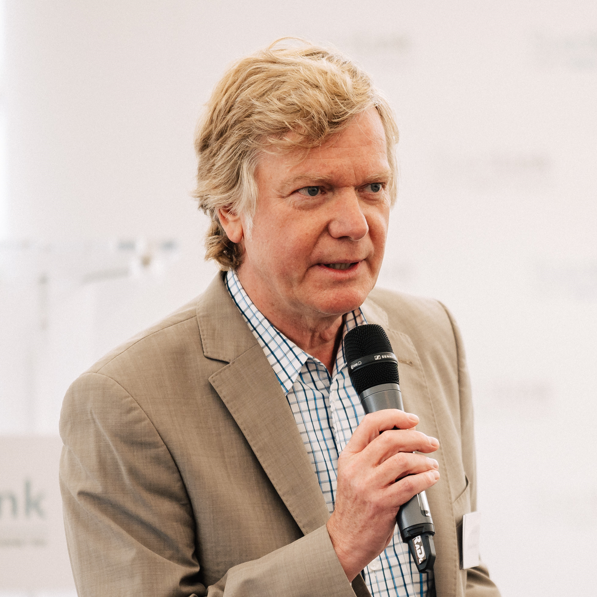Energy future "made in Europe": Multiterminal hubs as an important building block for realising the climate-neutral grid
Reading time
3 Minutes
Last updated
15/07/2024
Corporate
- German transmission system operators and industrial companies jointly develop innovative technology for the energy transition
- Important step on the way to feeding 70 gigawatts of offshore electricity into the grid
An important joint project for the energy transition is becoming a reality. The four German transmission system operators, 50Hertz, Amprion, TenneT and TransnetBW, are launching an innovation partnership with industrial partners Siemens Energy, GE Vernova and Hitachi Energy. The partnership aims to develop multiterminal hubs with direct current circuit breakers for the first time in order to link the new extra-high voltage direct current connections. Energy future "made in Europe": The technical concept is unique in Europe and can represent an important step on the way to realising the climate-neutral grid of the future.
Tim Meyerjürgens, COO of TenneT: "With this partnership, we are joining forces and shaping the infrastructure of the future together. In the German North Sea alone, 70 gigawatts of offshore wind energy are planned, which must not only be brought ashore efficiently, but also distributed throughout the country in the most area- and cost-efficient way possible. At the same time, the further integration of renewable energies is increasing the demands on grid stability and security of supply. We are there-fore focusing on new innovative technologies and are realising a large-scale meshed direct current grid for the first time. Together, we are paving the way for the climate-neutral grid."
Stefan Kapferer, Managing Director of 50Hertz: "The key to climate neutrality is the electrification of our society with electricity from renewable energies. As part of the innovation partnership that has now been concluded, the four German transmission system operators have joined forces with the leading technology companies in the sector to develop a common European standard for smart power hubs. This should enable us to connect the large direct current lines with each other in the future and create a direct current grid instead of straight point-to-point connections. This will strengthen the resilience of the entire European grid and increase security of supply, flexibility and stability."
Dr Hendrik Neumann, CTO of Amprion: "Innovations are crucial for achieving the ambitious climate targets. As a transmission system operator, we are therefore actively driving technological progress. The joint innovation partnership is an important building block for a sustainable, affordable and secure energy future in Germany and Europe."
Dr Werner Götz, CEO of TransnetBW: "Thanks to the innovative meshing of the power lines, we will minimise the space required and the construction of new plants in the future and keep costs stable for consumers - and thus promote acceptance of the energy transition. Without broad acceptance in society, the generational task of the energy transition cannot be shouldered."
Tim Holt, member of the Managing Board of Siemens Energy: "We are looking forward to working with all German high-voltage grid operators on this project, which is not only technically but also strategically groundbreaking. This is a further step towards using our high-voltage direct current (HVDC) transmission technologies flexibly and efficiently. We are thus driving forward the energy transition together with our partners in Germany."
Johan Bindele, Head of Grid Systems Integration at GE Vernova's Grid Solutions Business: "Innovation partnerships are key to accelerating the energy transition. We look forward to working with 50Hertz, Amprion, TenneT and TransnetBW on a new and groundbreaking HVDC solution for the efficient integration of renewable energy into the grid. This truly significant innovation could fundamentally change the way we deliver electricity."
Andreas Schierenbeck, CEO of Hitachi Energy: "Hitachi Energy pioneered HVDC technology 70 years ago. We are pleased to support the expansion of multiterminal HVDC systems and the introduction of new technologies such as our Hybrid HVDC Breaker in Germany. The integration of large amounts of renewable energy into the national electricity grids is essential for a sustainable energy future. Collaboration with our customers and key players in the energy sector is crucial for the realisation of a climate-neutral energy system."
Innovation direct current multiterminal hubs
The DC switchgear with DC circuit breakers (DC - direct current) is the centrepiece for implementing the so-called DC multiterminal hubs. They enable the efficient utilisation and distribution of very large amounts of wind power from the North Sea coast by linking direct current lines and flexibly transporting the energy to where it is needed. For the first time, this will create extra-high voltage direct current power grids that will improve the utilisation of direct current lines and at the same time support the existing alternating current grid as the backbone of energy transmission. Thanks to the innovative linking of the power lines, the space required and the construction of new plants will be reduced, minimising environmental impact and stabilising energy costs.
The DC circuit breakers as part of the DC switchgear are a technical innovation. In the event of a fault, they can identify faults in fractions of a second and switch off the affected areas. The aim of the project is to demonstrate the technical feasibility and economic viability of multiterminal technology.

Multiterminal hub: the first multiterminal hubs to be built in northern Germany will consist of a converter and a substation in addition to the DC switchgear, where the direct current lines are linked together, in order to supply the region with green energy.

DC switchgear: The DC switchgear is the centrepiece of the multiterminal hub. This is where the direct current lines are directly connected to each other in order to channel energy flexibly and as required.
Contacts

